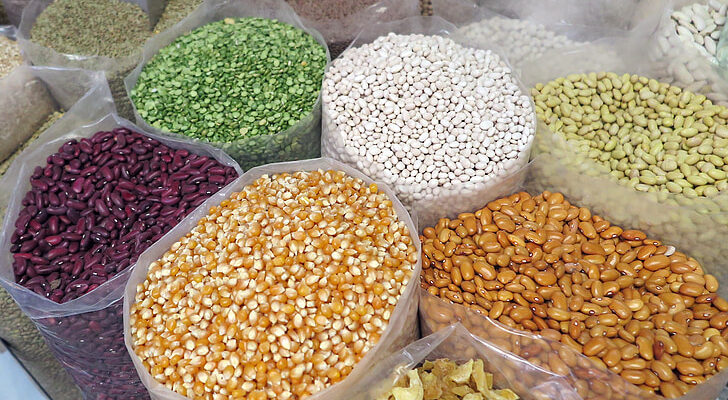The global agricultural industry is undergoing a transformation as sustainability and food security become key concerns. Among the most promising sectors for investment is the grain and pulse industry, which plays a crucial role in feeding the growing global population. With rising demand for plant-based proteins, increasing awareness of climate change, and advancements in sustainable farming techniques, investing in food grains and pulses presents lucrative opportunities. This article explores the potential of the grain and pulse industry, highlighting its role in sustainable agriculture and investment prospects.
The Growing Demand for Food Grains and Pulses
As the global population is projected to reach nearly 10 billion by 2050, the demand for food grains and pulses continues to rise. Cereals like wheat, rice, maize, and pulses such as lentils, chickpeas, and beans serve as staple foods in many countries. Additionally, the shift towards plant-based diets, driven by health consciousness and environmental concerns, has further bolstered the demand for pulses as a primary protein source.
Governments worldwide are promoting sustainable agricultural practices to ensure food security while minimizing environmental impact. Many countries have introduced incentives and policies to support farmers and agribusinesses, making investments in this sector even more attractive.
Sustainability in the Grain and Pulse Industry
Sustainable agriculture focuses on reducing environmental damage while maintaining productivity. The grain and pulse industry has seen significant advancements in sustainable practices, including:
-
Regenerative Agriculture – This method improves soil health by increasing organic matter, enhancing biodiversity, and reducing chemical dependency. By investing in farms that adopt regenerative practices, investors can support long-term productivity and environmental sustainability.
-
Precision Farming – The use of technologies such as satellite imaging, IoT sensors, and AI-driven analytics helps optimize water usage, fertilizer application, and crop rotation, resulting in higher yields and reduced waste.
-
Drought-Resistant Crops – Climate change has led to erratic weather patterns, affecting agricultural yields. Investment in drought-resistant grains and pulses ensures food security and reduces dependency on unsustainable irrigation practices.
-
Organic and Non-GMO Production – Consumers are increasingly favoring organic and non-GMO food grains and pulses. The demand for such products creates investment opportunities in farms and processing units that focus on sustainable and organic cultivation.
Investment Opportunities in the Grain and Pulse Sector
Investing in the grain and pulse industry offers multiple avenues, ranging from farming and processing to technology and trade. Below are some key investment areas:
1. Farming and Production
Direct investments in farms that cultivate grains and pulses using sustainable practices can yield high returns. Investors can support smallholder farmers by providing resources for sustainable farming, thus ensuring both profitability and social impact.
2. Agri-Tech Innovations
The agri-tech sector has seen remarkable growth, with innovations enhancing productivity and sustainability. Companies developing AI-driven farm management systems, smart irrigation, and bio-based fertilizers offer excellent investment potential.
3. Food Processing and Packaging
Processed food grains and pulses have higher market value due to their convenience and extended shelf life. Investing in eco-friendly processing and packaging units can boost returns while catering to the increasing consumer demand for sustainable food products.
4. Export and Trade
Countries with surplus grain and pulse production engage in exports to meet global demand. Investing in trade and logistics for food grains can be lucrative, especially as demand grows in regions facing food shortages.
5. Alternative Proteins and Plant-Based Foods
With the rise of veganism and plant-based diets, pulses are becoming a crucial ingredient in alternative protein products. Investing in companies that produce plant-based meat, protein powders, and fortified foods using pulses can be highly profitable.
Challenges and Mitigation Strategies
While investing in the grain and pulse industry offers promising opportunities, certain challenges need to be addressed:
-
Climate Change Risks – Unpredictable weather patterns can affect yields. Diversifying investments across different regions and supporting climate-resilient farming techniques can mitigate this risk.
-
Market Fluctuations – Prices of food grains and pulses fluctuate based on supply and demand. Long-term contracts with buyers and investment in storage facilities can help stabilize returns.
-
Regulatory Policies – Changes in agricultural policies and trade restrictions can impact investment. Keeping abreast of regulations and investing in compliant businesses is crucial.
Conclusion
Investing in the grain and pulse industry is a promising opportunity for those looking to support sustainable agriculture while achieving financial returns. The increasing demand for food grains, the rise of plant-based diets, and the advancements in sustainable farming make this sector highly attractive. By strategically investing in farming, technology, processing, and trade, investors can contribute to global food security and environmental sustainability while reaping significant benefits. With the right approach, the grain and pulse industry can pave the way for a more resilient and sustainable future in agriculture.
